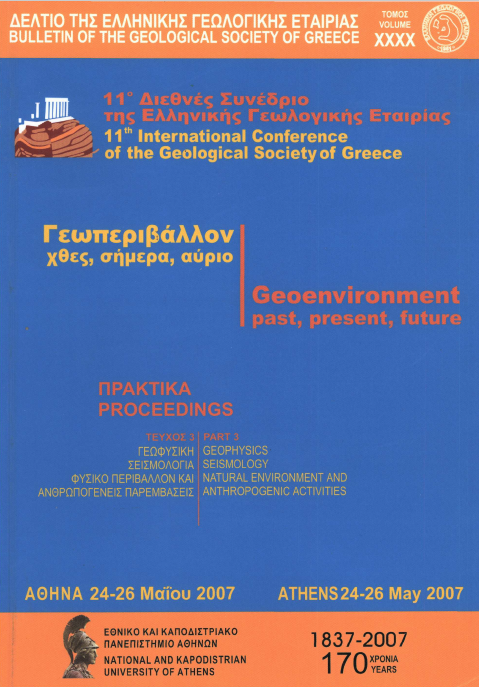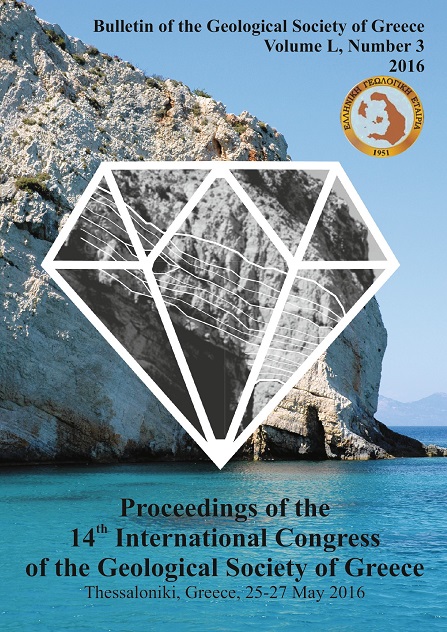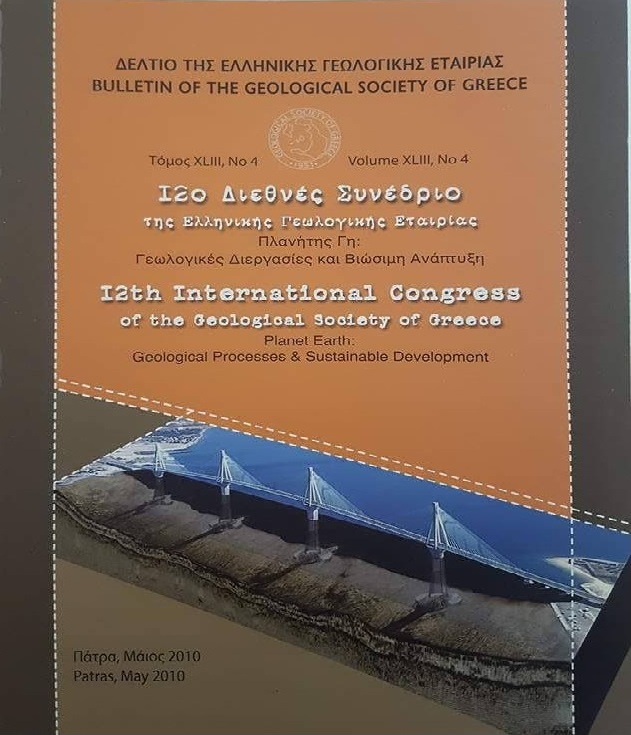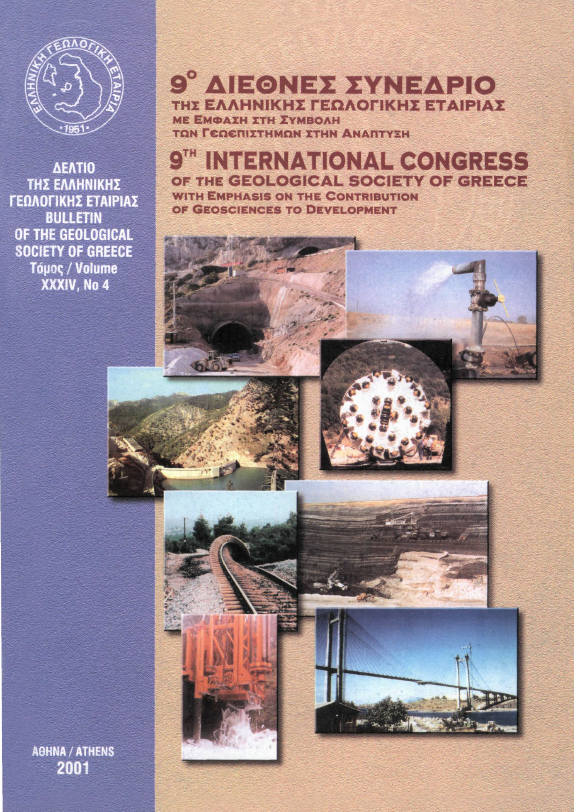Structure of the Marathon basin (NE Attica, Greece) based on gravity measurements

Περίληψη
Η παρούσα εργασία παρουσιάζει τα αποτελέσματα μίας βαρυτομετρικής διασκόπησης που διεξήχθη στην περιοχή της Λεκάνης Μαραθώνος, (ΒΑ. Αττική), προκειμένου να προσδιορίσει την δομή του υποβάθρου. Έγιναν συνολικά 120 μετρήσεις και εφαρμόσθηκαν τυπικές διαδικασίες αναγωγής δεδομένων, αν και με χρήση σύγχρονων τεχνικών υψηλής ακρίβειας. Η αντιστροφή της προκύπτουσας ανωμαλίας Bouguer προσέφερε μία μάλλον λεπτομερή απεικόνιση του υποβάθρου, η οποία συμπλήρωσε την πληροφορία διαθέσιμη από γεωλογικές και μορφολογικές μελέτες. Τα κύρια δομικά χαρακτηριστικά της Λεκάνης Μαραθώνος φαίνεται να ελέγχονται από ένα σύστημα ΒΑ-ΝΔ νεοτεκτονικών ρηγμάτων προκαλούντων κλιμακωτή πτώση του υποβάθρου κατά ΝΑ φορά, μέχρι του μέγιστου ανιχνεύσιμου βάθους των ~450m. Αυτά, μαζί με ένα σύστημα ΒΛ-ΝΑ ρηγμάτων και χορεία ελασσόνων ρηξιγενών χαρακτήρων, προσδίδουν στην Λεκάνη χαρακτηριστικά δομής Riedel, προκύπτουσας από κυρίως εφελκυστικό πεδίο Β-Ν διεύθυνσης που επιφέρει και δεξιόστροφη περιστροφή περί κατακόρυφο άξονα. Η παραμόρφωση αυτού του τύπου φαίνεται να διευκολύνει τον σχηματισμό τοπικών αντικλινικών/ συγκλινικών δομών, οι οποίες καθορίζουν την μάλλον περίπλοκη μορφολογία της περιοχής. Τέλος,, τα πολλαπλά διασταυρούμενα ρήγματα φαίνεται να σχηματίζουν υδροπερατό ιστό, πιθανότατα υπεύθυνο για την υφαλμύρινση των υδροφορέων της περιοχής. Τα ΒΑ-ΝΔ κανονικά ρήγματα πιθανόν να έχουν την σημαντικότερη συμβολή στο φαινόμενο αυτό
Λεπτομέρειες άρθρου
- Πώς να δημιουργήσετε Αναφορές
-
Chailas, S., Tzanis, A., & Lagios, E. (2007). Structure of the Marathon basin (NE Attica, Greece) based on gravity measurements. Δελτίο της Ελληνικής Γεωλογικής Εταιρείας, 40(3), 1063–1073. https://doi.org/10.12681/bgsg.16825
- Ενότητα
- Γεωφυσική και Σεισμολογία

Αυτή η εργασία είναι αδειοδοτημένη υπό το CC Αναφορά Δημιουργού – Μη Εμπορική Χρήση 4.0.
Οι συγγραφείς θα πρέπει να είναι σύμφωνοι με τα παρακάτω: Οι συγγραφείς των άρθρων που δημοσιεύονται στο περιοδικό διατηρούν τα δικαιώματα πνευματικής ιδιοκτησίας επί των άρθρων τους, δίνοντας στο περιοδικό το δικαίωμα της πρώτης δημοσίευσης. Άρθρα που δημοσιεύονται στο περιοδικό διατίθενται με άδεια Creative Commons 4.0 Non Commercial και σύμφωνα με την οποία μπορούν να χρησιμοποιούνται ελεύθερα, με αναφορά στο/στη συγγραφέα και στην πρώτη δημοσίευση για μη κερδοσκοπικούς σκοπούς. Οι συγγραφείς μπορούν να: Μοιραστούν — αντιγράψουν και αναδιανέμουν το υλικό με κάθε μέσο και τρόπο, Προσαρμόσουν — αναμείξουν, τροποποιήσουν και δημιουργήσουν πάνω στο υλικό.










